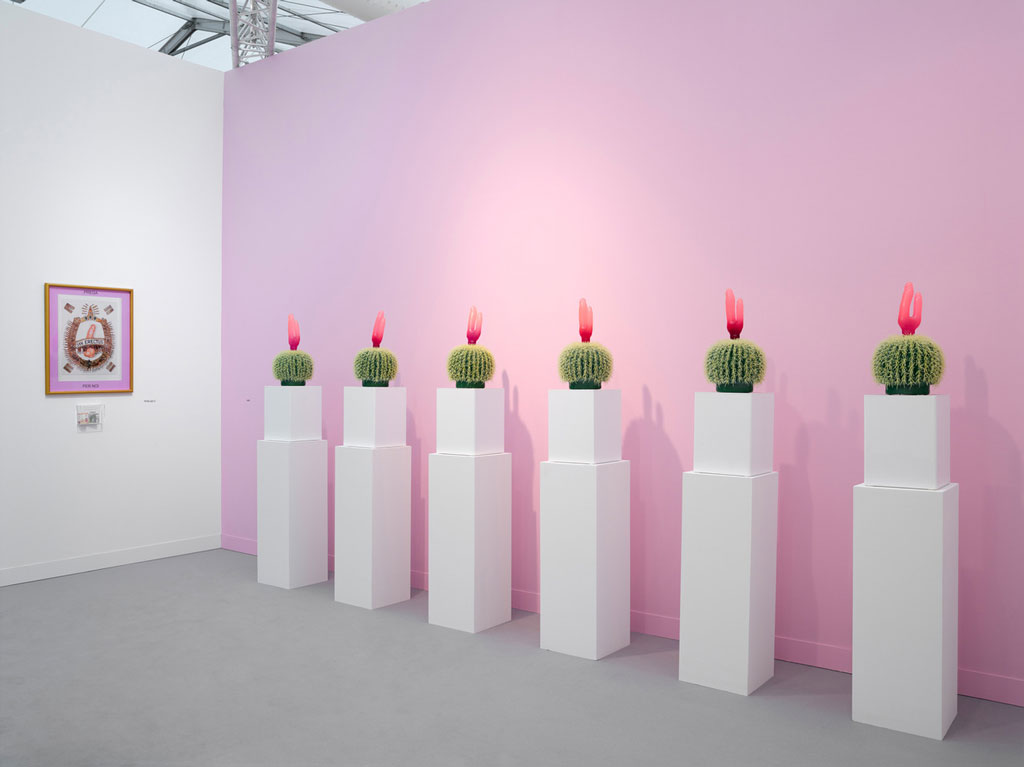ART:Renate Bertlmann-Austrian Pavilion Biennale Arte 2019
Since its foundation in 1895, and therefore as the oldest international art exhibition, the Venice Biennale has served as a model for all big contemporary exhibitions. Its history is also a cultural-political narrative of the European 20th and global 21st Centuries. Above all it is a history of exhibitions and their spectacular provocations that has consistently seen art as a challenge.
By Dimitris Lempesis
Photo: Biennale Arte Austrian Pavilion Archive
2019 marks the first time in the history of Austria’s participation in the Venice Biennale that a female artist, Renate Bertlmann, puts on a solo presentation at the Pavilion. In Austria, Renate Bertlmann has long been regarded as a leading feminist artist and a pioneer of performance art. Her Bertlmann’s complex oeuvre bespeaks an artistic commitment that is both aesthetically and conceptually intricately connected to an aesthetics of risk. For her exhibition at the Austrian Pavilion, Renate Bertlmann developed an installation entitled “Discordo Ergo Sum”, by rephrasing the philosophical principle cogito ergo sum (I think, therefore I am), the artist attempted to dismantle logocentrism’s supremacy of logocentrism and to describe herself in her in-surgent self-image. On the basis of her subversive artistic axiom Amo Ergo Sum (“I love, therefore I am”) the striking work in front of the pavilion, with which Bertlmann signs the pavilion like a canvas with the same irony we know from her previous work, and the installation of knife-roses covering the pavilion’s entire courtyard, as “a precise grid of 312 roses, a kind of red army standing at attention in the sun” display a synesthetic artistic commentary that allows us to sensuously experience the dichotomy of our existence. This subversive treatment puts the principle of her artistic approach in a nutshell. Causing upheaval at the highest level, Bertlmann appropriates the arsenal of social symbols, breaks it open and reassesses them feministically. In this process, contradictions stand side by side in accord, are made to oscillate, and are perceived as an expression of human diversity and plurality. From the nimble foundation of the artist’s two central figures, the lover and the insurgent, emerges a transitional space where incongruities convene, separate things change sides, and hierarchies and dichotomies are set in motion. Created in an interplay of conceptual, aesthetic, and material intensities, this space offers a basic tension that, on the one hand, critically presents itself as personal and sociopolitical phenomena of global developments and, on the other, points to the transformative potential of art in aesthetical and sociopo-litical contexts. Between this foundational movement in the exterior space and the pavilion courtyard, the exhibition space gives way to a cartographic view of Renate Bertlmann’s artistic practice. Reproductions of her charts, sketches, photos, filmstrips, and drawings in a box inserted to fit into the pavilion creates a contemplative zone where visitors immerse themselves in Renate Bertlmann’s artistic self-understanding and can perceive it in relation to the new installation.
Info: Curator: Felicitas Thun-Hohenstein, Assistant Curator: Marija Nujic, Austrian Pavilion, Giardini della Biennale, Sestiere Castello, Venice, Duration: 11/5-24/11/19, Days & Hours: Tue-Sun 10:00-18:00, www.labiennale.org












